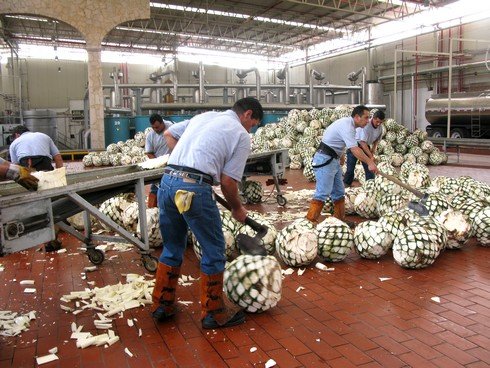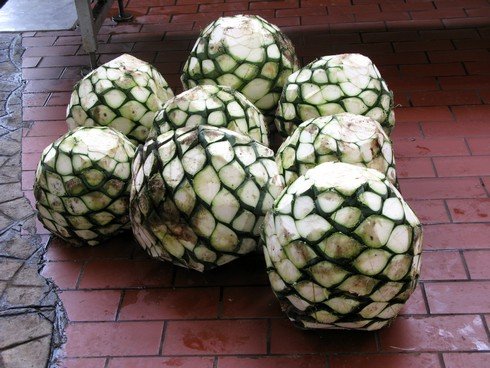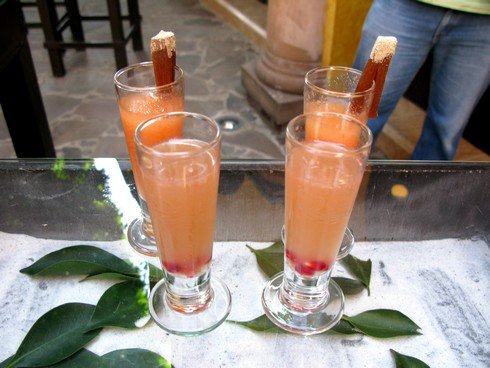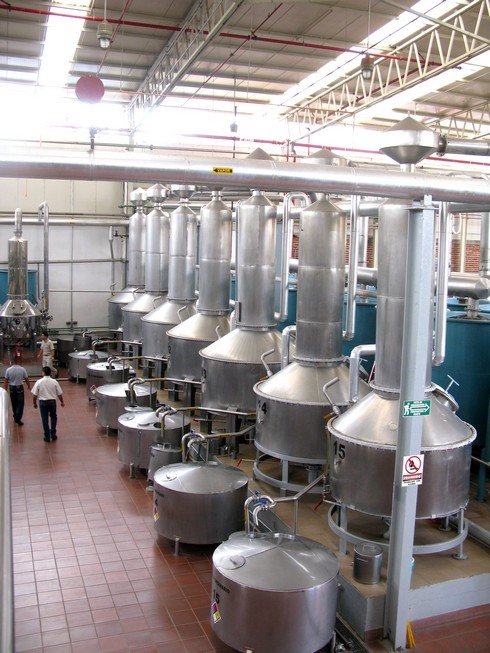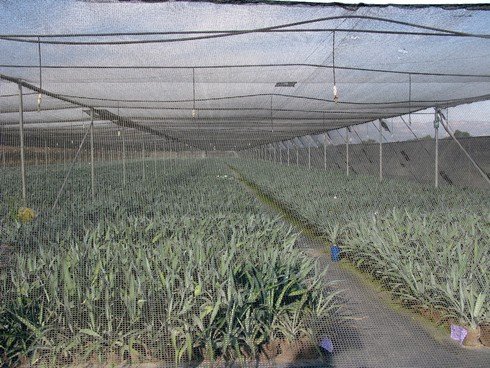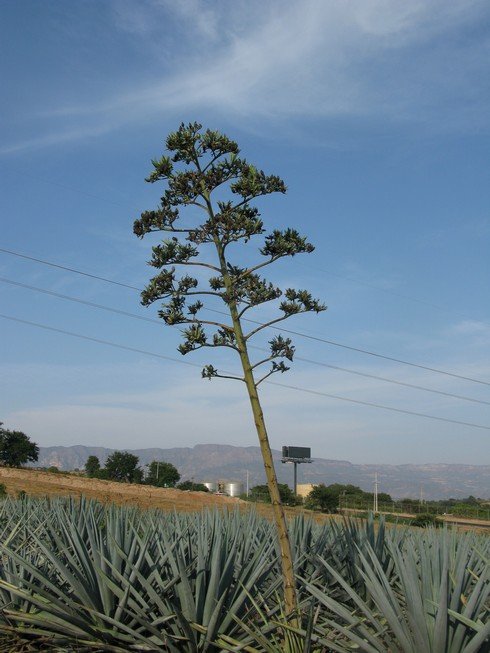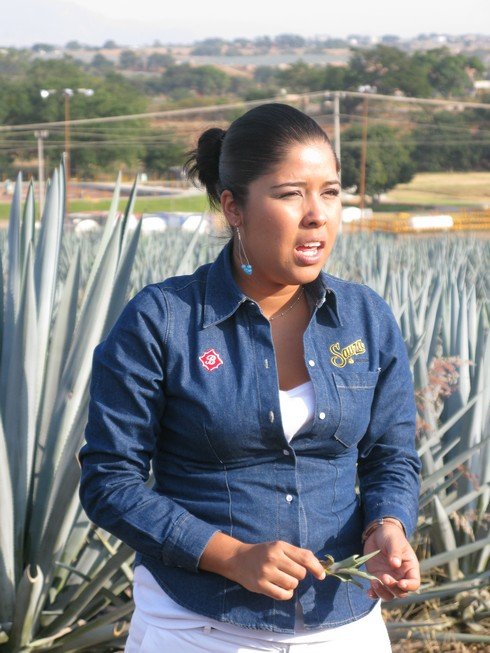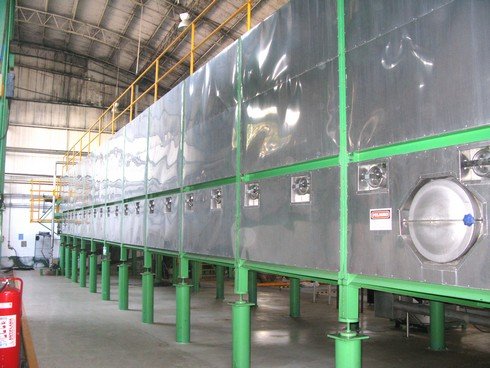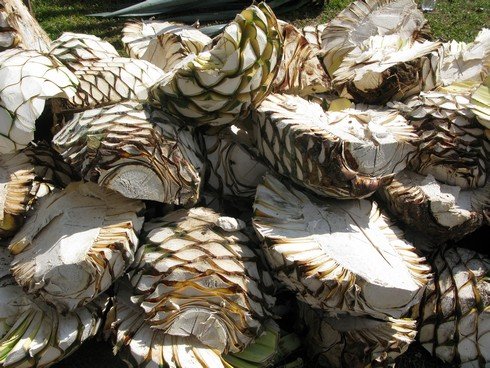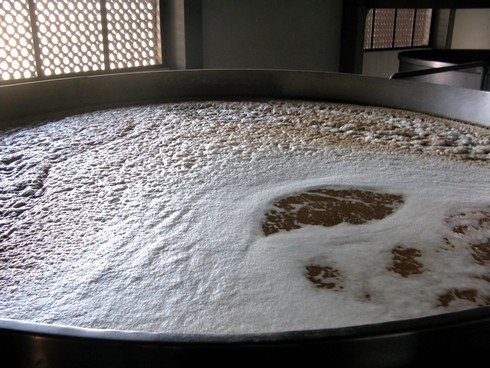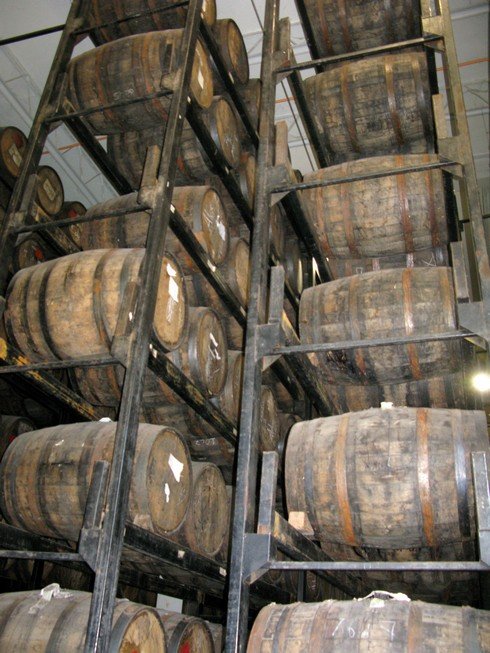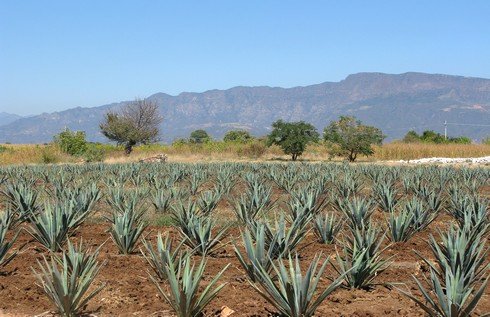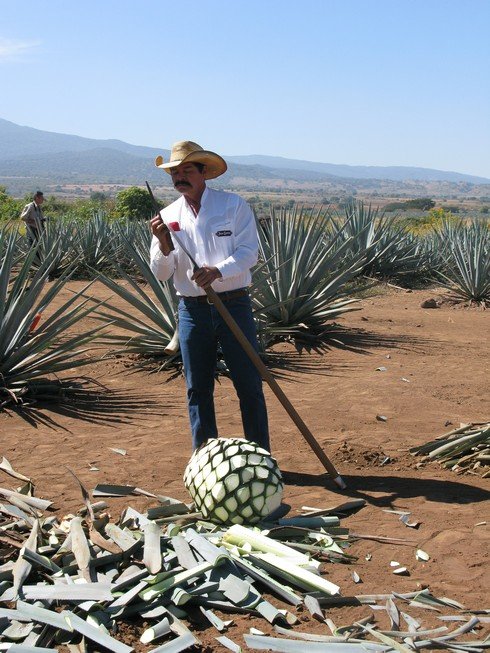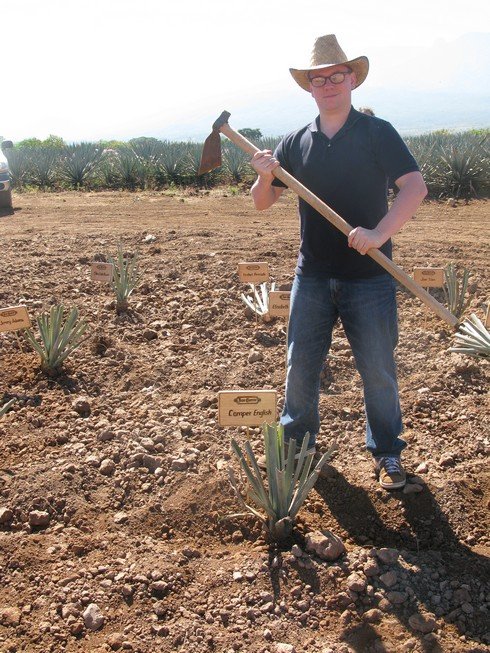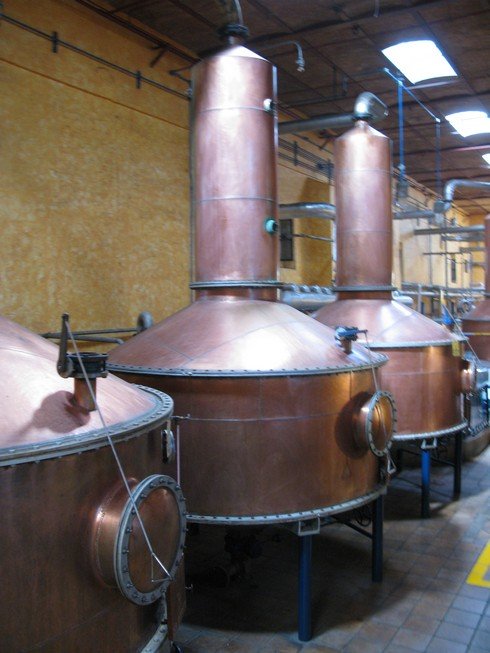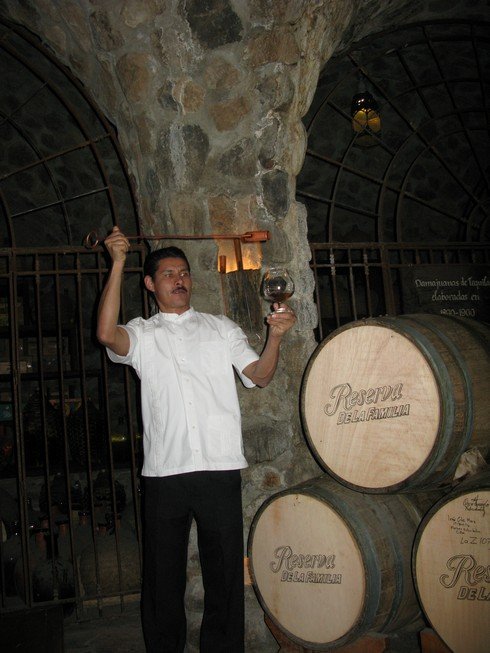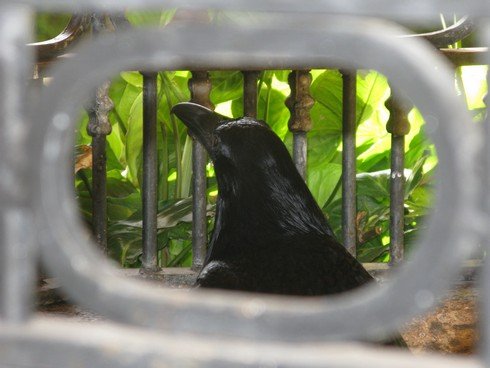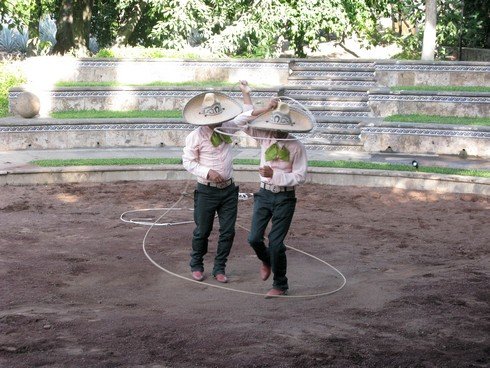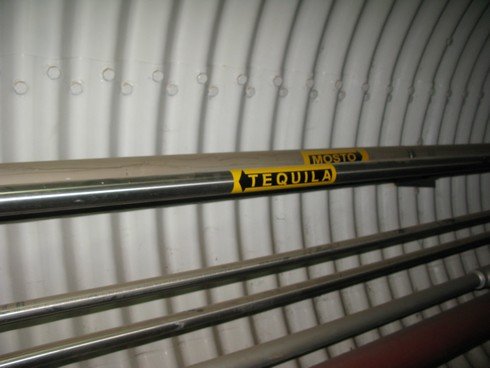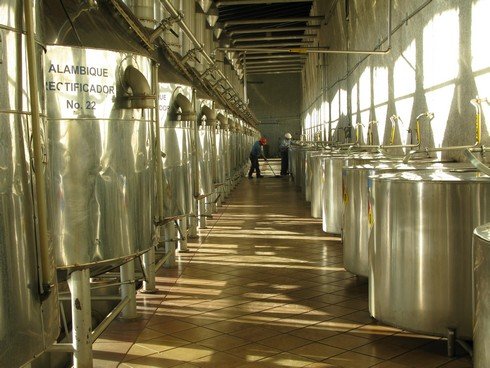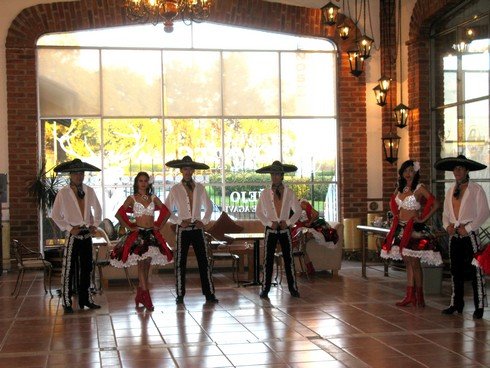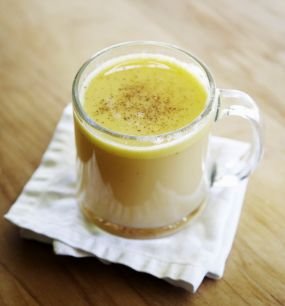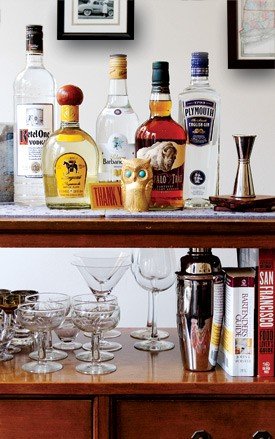In November I visited seven tequila distilleries in Mexico. Here are some pictures and notes from my visit to Casa Pedro Domecq in the town of Arandas.
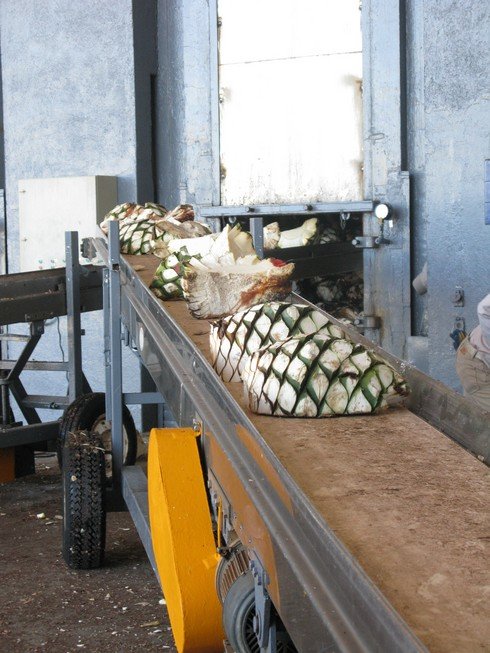 (Agave being loaded into ovens. They use the same agave for treatment with rollermill as with tahona.)
(Agave being loaded into ovens. They use the same agave for treatment with rollermill as with tahona.)
This distillery makes Tezon tequila, Olmeca Altos, and a mixto tequila for the Mexican market. I believe Tezon is all tahona tequila. This was distributed by Pernod Ricard in the US, but it appears they've abandoned it and are pursuing sales of Olmeca Altos, which is about half the price, instead. This tequila, also 100% agave, is made by blending agave that has been processed with a roller mill with tahona agave.
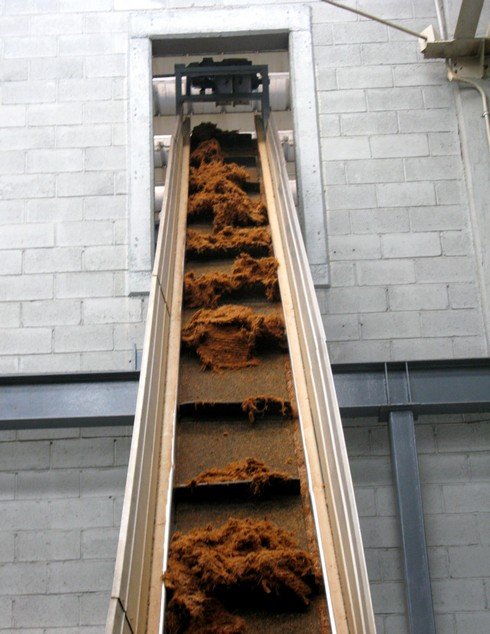 (In the rollermill process, after the agave is baked to break up the complex into simpler, fermentable sugars, the agave is shredded using a rollermill.)
(In the rollermill process, after the agave is baked to break up the complex into simpler, fermentable sugars, the agave is shredded using a rollermill.)
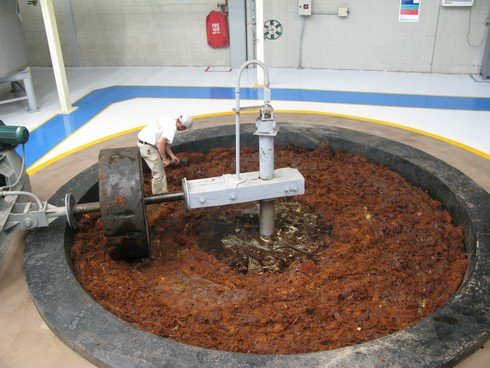
(The tahona method. After baking the agave, the chunks of agave are placed in this pit. The large volcanic stone wheel rotates around in it, crushing the agave to expose the sugars before distillation. In olden times, the tahona would have been pulled by a mule.)
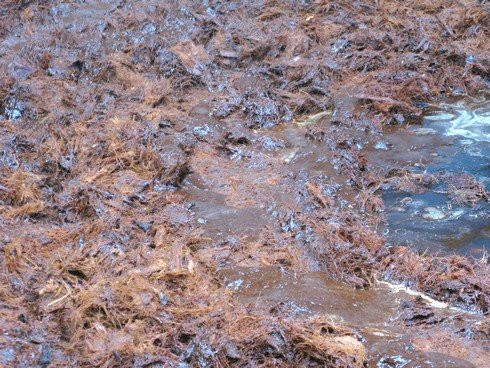
(This is the post-tahona agave. Gross. The fibers actually reabsorb the liquids here. All of it is thrown into the fermentation tanks.)

(Fermenting agave juice.)
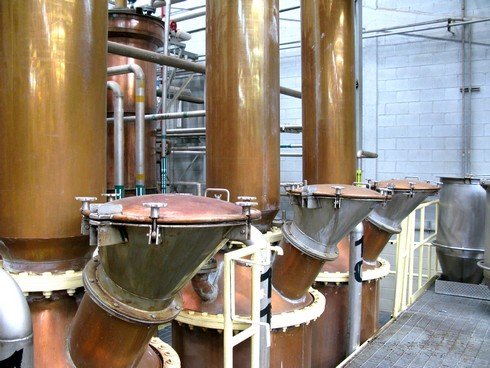
(These stills are for the tahona agave- the big opening is so they can put in the fibers.)
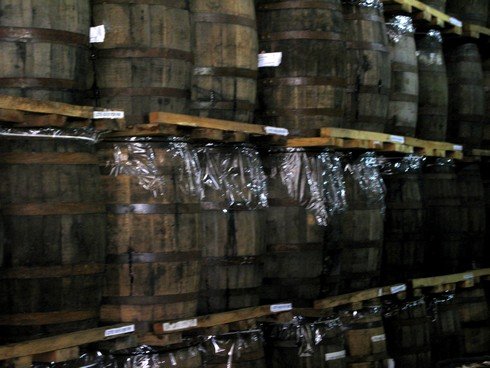
(In the warehouse, they cover the lids of some barrels with plastic to reduce evaporation.)
- Agave for Olmeca Altos is 7-8 years old before harvest.
- They cut out the cogollo (the interior of the plant where it would sprout to reproduce if it could) in the field.
- They heat the agave in ovens, though they own an autoclave that is sometimes used for the mixto.
- They use larger pot stills for the mixto.
- They ferment and distill the tahona agave with the agave fibers, not the rollermill agave.
- The reposado tequila is aged in ex-bourbon barrels for 6-8 months.
- They replace the barrels after 9-10 years. They tried recharring the barrels but didn't like the results.
- The last agave shortage was in 2000 and 2001. Some people predict another shortage in a year or two.
- Lowland soils are sandier, darker, and more volcanic
- 60-70% of agave for tequila is grown in the highlands
